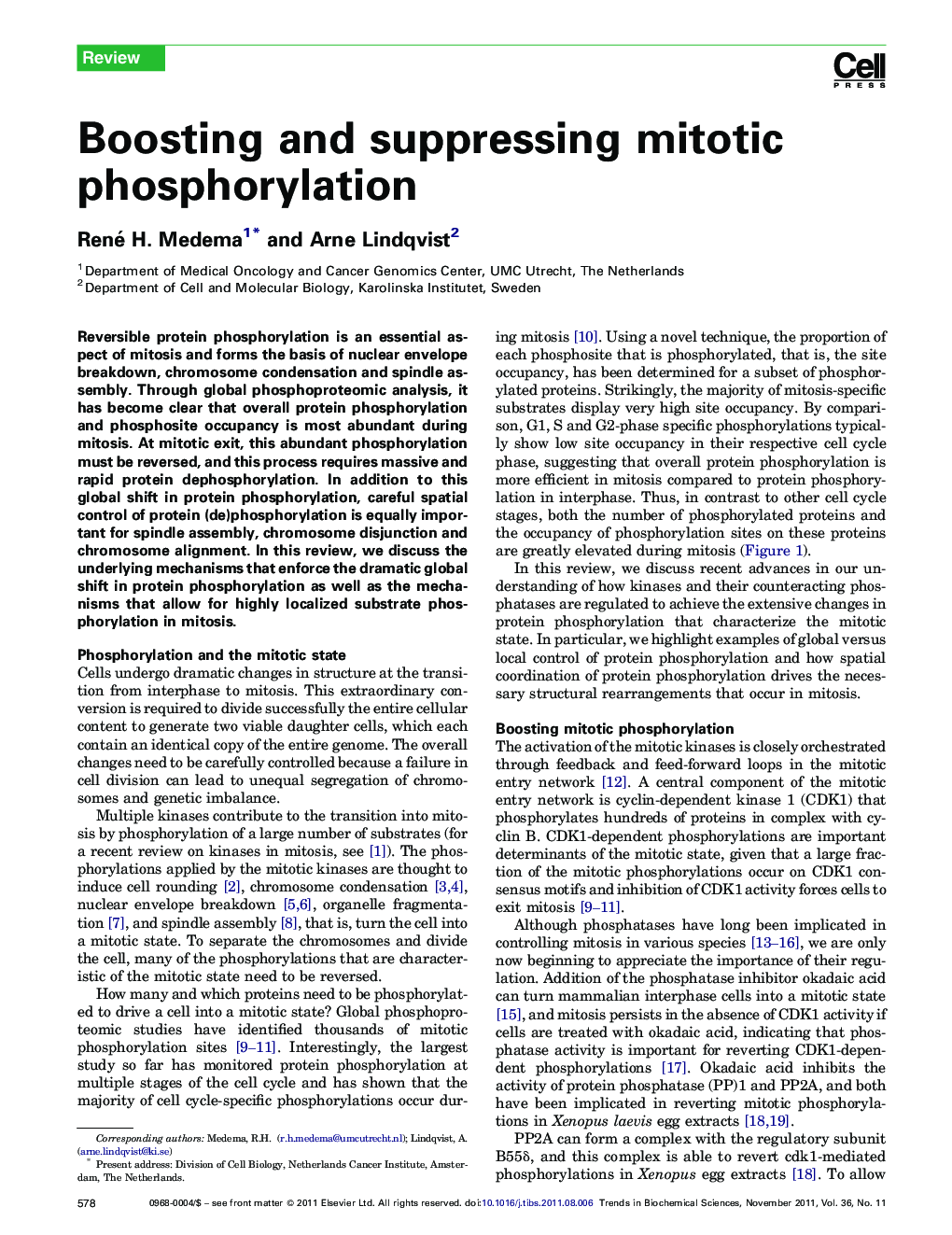| Article ID | Journal | Published Year | Pages | File Type |
|---|---|---|---|---|
| 2030892 | Trends in Biochemical Sciences | 2011 | 7 Pages |
Reversible protein phosphorylation is an essential aspect of mitosis and forms the basis of nuclear envelope breakdown, chromosome condensation and spindle assembly. Through global phosphoproteomic analysis, it has become clear that overall protein phosphorylation and phosphosite occupancy is most abundant during mitosis. At mitotic exit, this abundant phosphorylation must be reversed, and this process requires massive and rapid protein dephosphorylation. In addition to this global shift in protein phosphorylation, careful spatial control of protein (de)phosphorylation is equally important for spindle assembly, chromosome disjunction and chromosome alignment. In this review, we discuss the underlying mechanisms that enforce the dramatic global shift in protein phosphorylation as well as the mechanisms that allow for highly localized substrate phosphorylation in mitosis.
